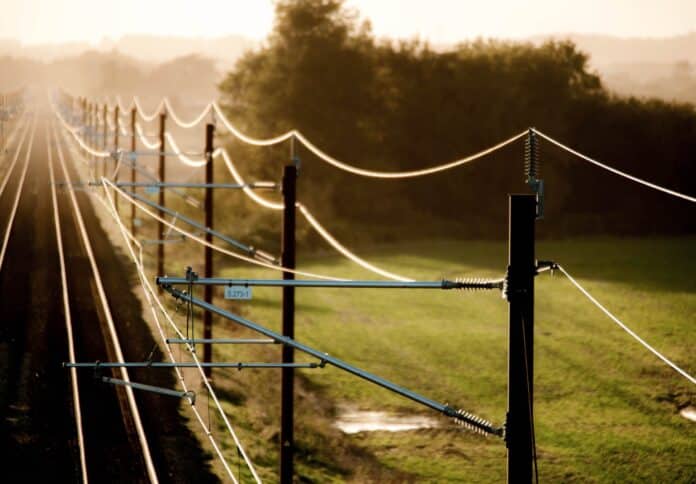Rob Morris, Managing Director of Siemens Mobility – Rail Infrastructure, explains more about Sicat SX
For the last decade, we have seen how Denmark has seamlessly delivered a rolling programme of decarbonisation, setting the standard for how to deliver affordable electrification without compromising the reliability of their rail infrastructure.
One of the pivotal drivers behind their success was the implementation of Siemens Mobility’s Sicat SX – an overhead line system that can achieve 112-metre span lengths and up to 40 per cent reduction in masts with no reduction in operational resilience. As part of our aspiration to make this efficient solution available for the UK market, we are delighted to announce that Sicat SX has been officially accredited against the UK railway’s highest level technical standard – NTSN (National Technical Specification Notices). With the Sicat SX solution now tailored to the UK rail network, we have the opportunity to build on the proven record of other countries, to realise our vision of decarbonising the railway with cost effective electrification.
How were you able to tailor the Sicat SX Overhead Line range to the UK rail network?
Our specialist team of engineers have collaborated with the industry to ensure that Sicat SX is compatible with existing UK infrastructure. Despite working around the challenges presented, such as Victorian bridges and tunnels, is still exceeds all performance criteria. Sicat SX is fully compatible with voltage-controlled clearances (VCC) and therefore can adapt to the existing infrastructure around it.
So how does Sicat SX reduce the amount of infrastructure but still maintain its resilience?
Modern overhead line systems installed since 2010 have limited the span distance between masts to 65 metres, to provide resilience to high winds. Longer span lengths on the East Coast and West Coast main lines were attempted in the 1980s, but it was found that this approach led to a number of weather-related incidents as well as the need to apply speed restrictions during high winds to prevent system failure.
Sicat SX, through the selection of optimised, hard-wearing conductors combined with a clever mix of tensions and inverted staggers, can be installed with up to 112-metre span lengths with no restrictions on train operation even during high winds.
What other application does Sicat SX have on the UK rail network?
Sicat SX is suitable for both full and discontinuous electrification and can be the enabler for the implementation of battery-electric rolling stock – offering asset owners flexibility in the application of the system on their rail network. This makes it suitable for areas where the business case for full electrification is not cost effective, such as on rural routes or in areas with low train frequency.
What are the next steps for Sicat SX?
We are fully supportive of Network Rail’s ambition to trial extended spans in their traditional UKMS overhead line system and the projected saving of around 5 per cent in masts that comes with it. It is vital that the cost of electrification is reduced, however it is important to consider the loss of resilience that will come with this when operating the railway, especially with the challenge of our changing climate.
Our focus is to continue working with the rail industry to implement Sicat SX in the UK. Building on the success of benchmark European electrification programmes in an affordable way without the compromise of reduced resilience, no matter the weather.







































 0113 2082620
0113 2082620 info@railbusinessdaily.com
info@railbusinessdaily.com 15 Mariner Court, Wakefield WF4 3FL
15 Mariner Court, Wakefield WF4 3FL

